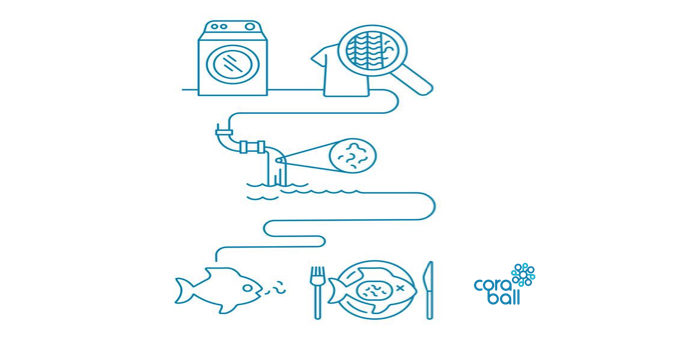It is worrisome enough that there is an ocean of plastic debris bigger than the size of Texas floating in the middle of the Pacific Ocean, but have you heard about the less visible microfiber pollution invading our waters? Microfibers are tiny bits  of polyester and other synthetic fibers that break off of our clothing and wash into our waters through the sewer system. With ‘athleisure’ clothing more popular than ever, the quantity of plastic fibers that are being ingested by marine animals are becoming a major concern. We humans are likely to be affected as we consume seafood from contaminated waters.
of polyester and other synthetic fibers that break off of our clothing and wash into our waters through the sewer system. With ‘athleisure’ clothing more popular than ever, the quantity of plastic fibers that are being ingested by marine animals are becoming a major concern. We humans are likely to be affected as we consume seafood from contaminated waters.
Watch the short documentary ‘Story of Microfibers‘ by the folks who produced ‘The Story of Stuff.’
What to do?
We can limit the synthetic fibers we wear. Wash these materials in cold water in gentle cycles to reduce the amount of fiber that breaks off.
Use a filter that captures microfibers before they do down your drain. A number of products are coming on the market that filter out particles from the wash water. (The filters must be cleaned WITHOUT water.)
- Installed onto the wall and attached to the drain hose of your washing machine and the drain, Filtrol uses a reusable cloth filter to separate out 86% of microfibers, according to the company website. Pull the collected fibers off the filter after 8-10 wash cycles and place back in the device.
- Lint LUV-R is another device that needs to be installed onto the wall or a cabinet and attached to the drain hose of your washing machine and the drain. The filter is metal but the concept is the same. Pull off the microfiber lint and reinstall the filter. The company claims the device is 65-100% effective at filtering out microfibers.
- Planetcare uses installed filtration devices, but uses cartridges that you return to the company for cleaning and reuse rather than clean it yourself at home. The company website claims that their filters are 90% effective at filtering out microfibers.
- Coraball is a ‘ball’ that is placed inside your washing machine along with your dirty clothes. It was tested by the University of Toronto to catch 26% of the microfibers in the wash water. You can place multiple balls into the laundry for better results. They should be cleaned after each wash and before reuse.
- Guppyfriend is a mesh bag into which you place synthetic clothes before you place them into the washing machine. Think of the bags you use for washing delicates in the machine. The microfibers collect on the inside surface of the bag–just peel off and place in the trash.



Recently on Twitter